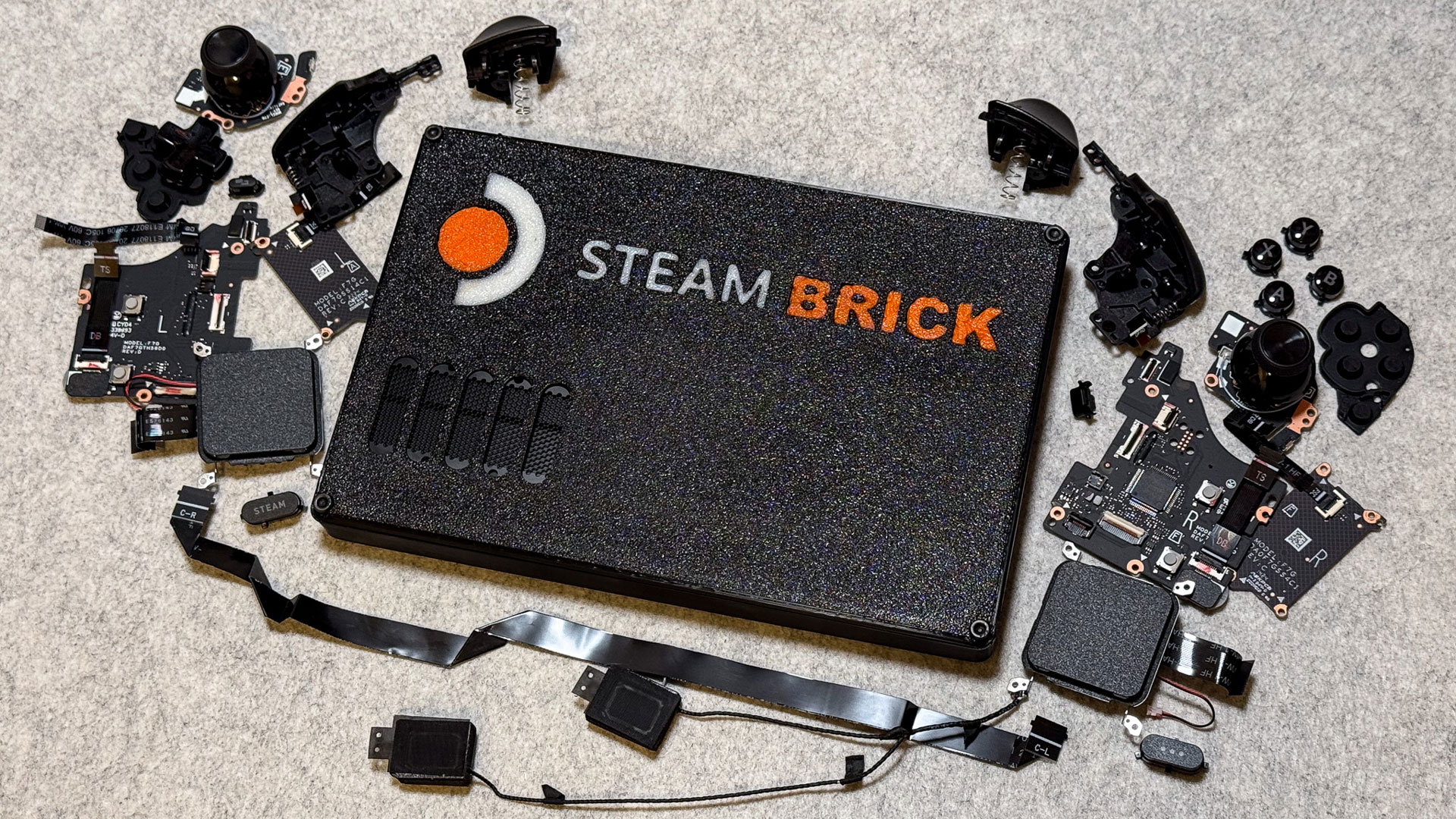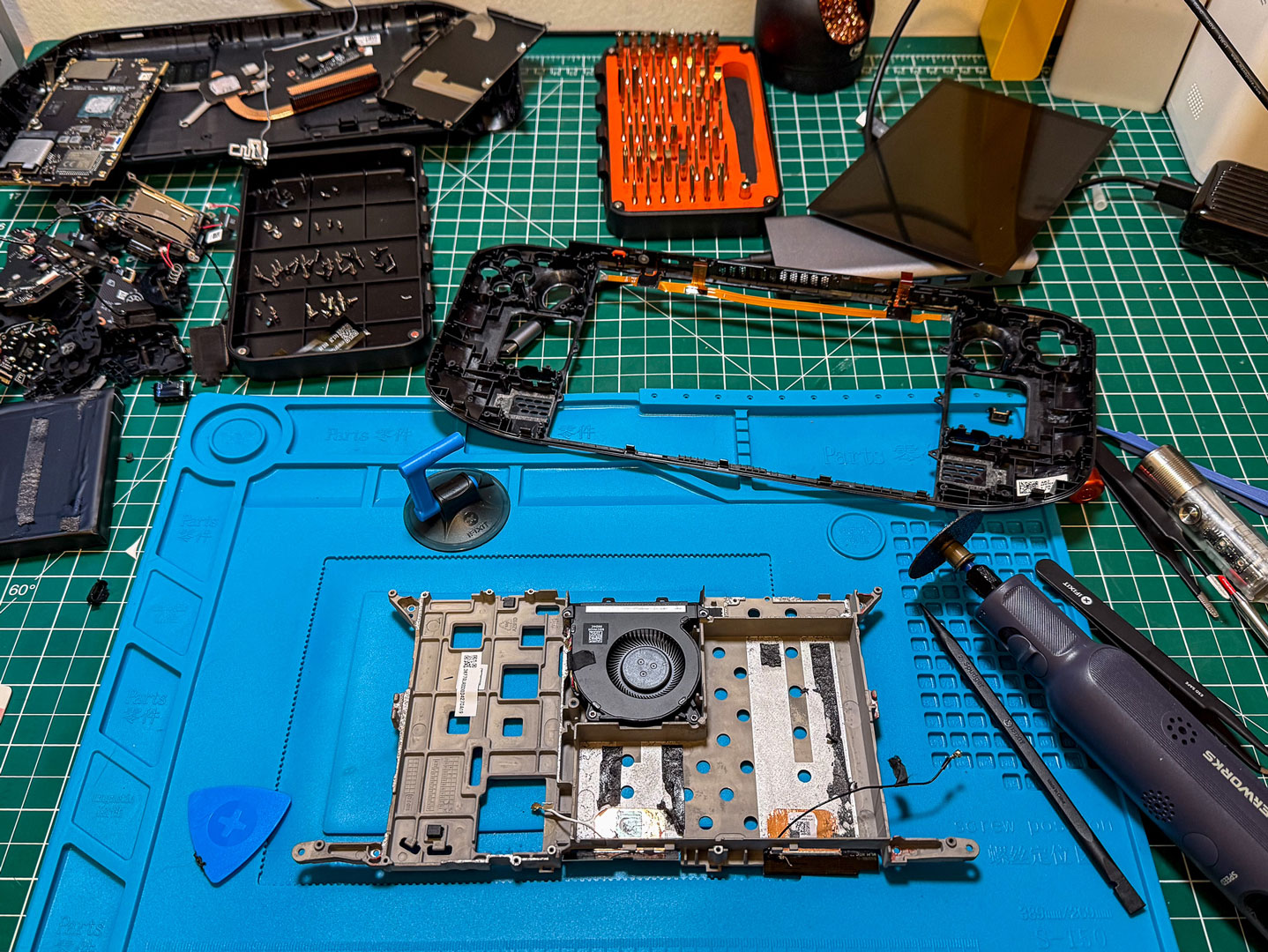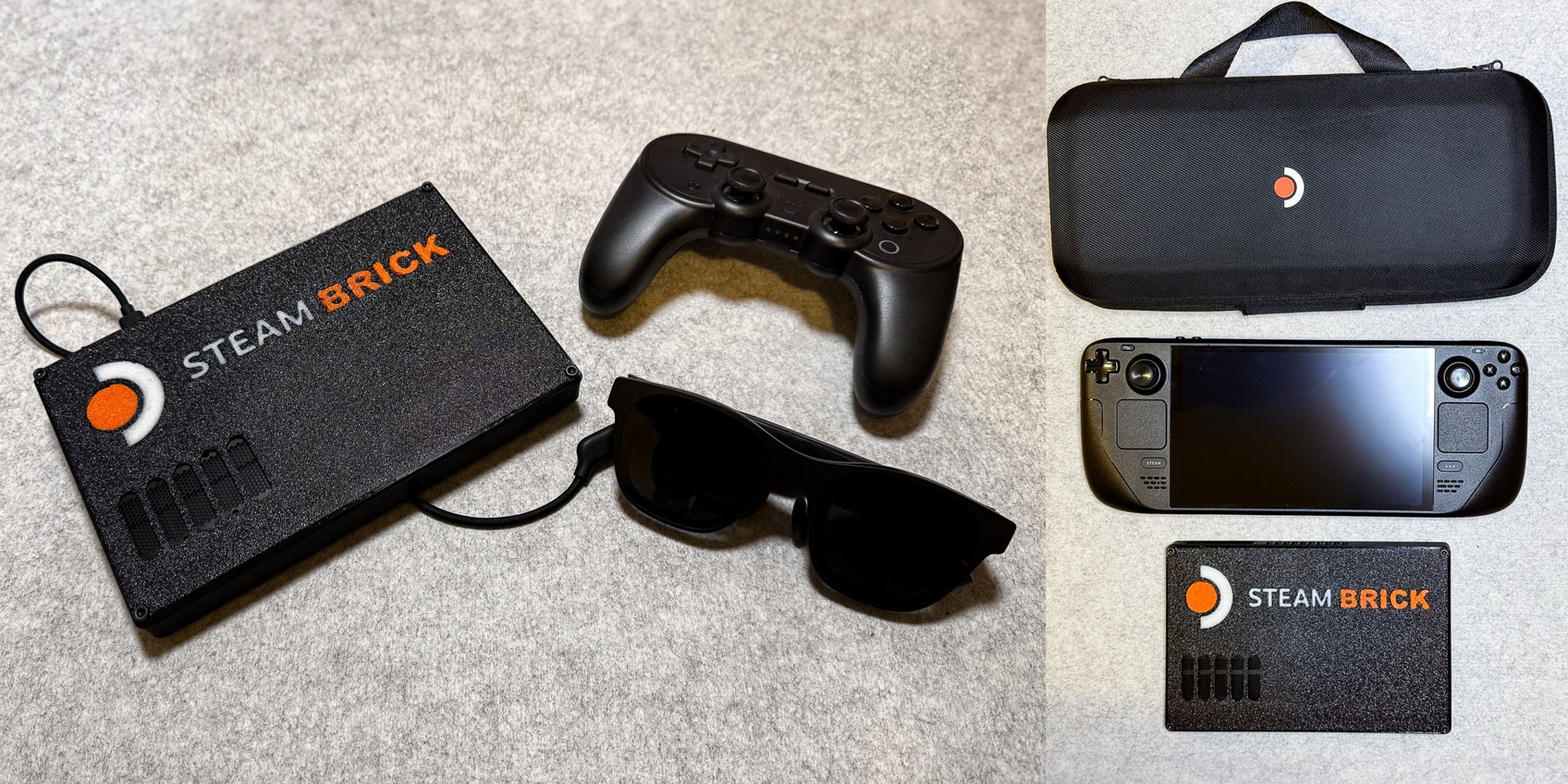Modder creates the Steam Brick — a stripped-down Steam Deck with only a power button and a USB
More rugged, and compact, but still great for hooking up to a TV or headset.

Someone has stripped down and modded one of the popular Steam Deck handhelds into a minimal form factor dubbed the Steam Brick. "No screen, no controller, and absolutely no sense," quips Crastinator-Pro on GitHub, "just a power button and a USB port." Yet, it still delivers all the portable functionality the GitHubber needs as the device was (and is) invariably connected to either a TV or AR glasses for Steam-based fun.
For some, like Crastinator-Pro, the Steam Deck is a bit hefty, even ungainly. They explain that the handheld was often left behind when packing a backpack, as it was just a little bit too bulky. We guess the 'brick' is also rather more rugged and immune to mistreatment.



Crastinator-Pro followed the iFixIt Steam Deck Repair Guides to strip down the handheld to its bare essentials without rendering it useless in the process. They first pleasingly confirmed that the Steam Deck wasn't averse to starting up without its standard-issue control array, battery, or even the screen. Next, the system was safely disassembled to become just a mainboard and fan.
Finding that a rigid metal frame was also part of the Steam Deck structure, Crastinator-Pro cut off a couple of its protrusions to make a perfect reinforcement for the Steam Brick. A few measurements and CAD drafting minutes later, and the GitHubber had managed to 3D print a brick shell to snugly accommodate the frame, mobo, and cooling.
The result was that the newly formed Steam Brick was "about a 3rd of the size of the Deck, and about 4 times smaller than the Deck’s OEM case," says Crastinator-Pro. "As a bonus, it’s also 24% lighter!" It can also be tossed in a bag without any case or screen protection, and the creator claims there is nothing to worry about.
Now, in use, the Steam Brick is powered on using a single button, then a dock can provide power and monitor/headset connectivity.
There are a couple of small wrinkles that affect the GitHub-shared plans, as they stand, though. Crastinator-Pro noted that they aren't able to access the BIOS, as that function requires holding down the '+' while powering up. That issue can be sidestepped using a terminal command to enter BIOS at the next boot, though.
Stay On the Cutting Edge: Get the Tom's Hardware Newsletter
Get Tom's Hardware's best news and in-depth reviews, straight to your inbox.
Secondly, the Steam Brick power indicator light doesn't differentiate between the system being on or off. This doesn't sound like a very serious issue, as the system is also stripped of battery power, so once unplugged, it isn't going to be left running by accident.

Mark Tyson is a news editor at Tom's Hardware. He enjoys covering the full breadth of PC tech; from business and semiconductor design to products approaching the edge of reason.
-
Notton So it's basically a mini-PC running steamOS.Reply
I mean, I get that it's cheaper than buying a mini-PC since they already had a 3D printer and steamdeck, but couldn't they have traded their steamdeck for a mini-PC? -
usertests Reply
I would convert a Steam Deck to a mini PC after its useful life as a handheld has ended, or if the screen breaks, etc. Framework has made this easy to do with their laptop mainboards, but if a kit isn't available or you don't want to screw around, you could simply dock your handheld forever. It would be preferable if the thing can run with the battery removed.Notton said:So it's basically a mini-PC running steamOS.
I mean, I get that it's cheaper than buying a mini-PC since they already had a 3D printer and steamdeck, but couldn't they have traded their steamdeck for a mini-PC? -
MobileJAD I just want the replacement Steam Deck motherboards to get cheaper online so I can attempt to cobble together a Steam Deck mini PC. The ones I have seen online cost as much as a refurbed 64GB Steam Deck direct from Valve.Reply -
gg83 I think this modern is on to something. Especially for AR glasses. At least until all the processing is done in the cloud.Reply -
cryoburner ReplyThey explain that the handheld was often left behind when packing a backpack, as it was just a little bit too bulky.
And now it will be left behind when packing a backpack, as it lacks a built-in power source, display and controls. Bringing along an external input device and cables will likely result in it taking up more space than it did before.
The only way I could see this making any sense is if the device had an internal display output failure that wouldn't be practical to fix. Otherwise, why take the touchscreen off of it? It would have remained far more useful and not much larger had they instead converted it into a 7.4" x86 tablet. -
MobileJAD Reply
To be honest there are people who will take mini pc's with them on trips as opposed to handhelds that include the display and battery built in, because they want to hook it up to the TV in their hotel room, or they want to use it with a projector during a meeting on a business trip. The Steam Deck is still a x86 PC stuffed inside a handheld gaming unit, so if someone had a broken Steam Deck they can easily convert it down to a desktop mini pc and install Windows 10, 11 or Linux on it. Its just too bad that it apparently refuses to boot without a battery attached to the motherboard.cryoburner said:And now it will be left behind when packing a backpack, as it lacks a built-in power source, display and controls. Bringing along an external input device and cables will likely result in it taking up more space than it did before.
The only way I could see this making any sense is if the device had an internal display output failure that wouldn't be practical to fix. Otherwise, why take the touchscreen off of it? It would have remained far more useful and not much larger had they instead converted it into a 7.4" x86 tablet. -
cryoburner Reply
According to the article, they found the stripped-down device to start up fine without a battery and peripherals, though of course it still requires a power cable. But again, it really begs the question of why bother removing the battery or screen just to make it a little more compact, at a significant loss of functionality? Part of the advantage of having a portable device like that is that you can access it anywhere, while this modified version needs access to an external power source, display and input device. You could still use the device as a mini PC without making any modifications to it, as it can be docked with a television or projector and other peripherals in its stock form. Making it moderately smaller doesn't seem worth the tradeoff of removing everything that allows it to function on its own without additional external equipment.MobileJAD said:because they want to hook it up to the TV in their hotel room, or they want to use it with a projector during a meeting on a business trip. The Steam Deck is still a x86 PC stuffed inside a handheld gaming unit, so if someone had a broken Steam Deck they can easily convert it down to a desktop mini pc and install Windows 10, 11 or Linux on it. Its just too bad that it apparently refuses to boot without a battery attached to the motherboard.